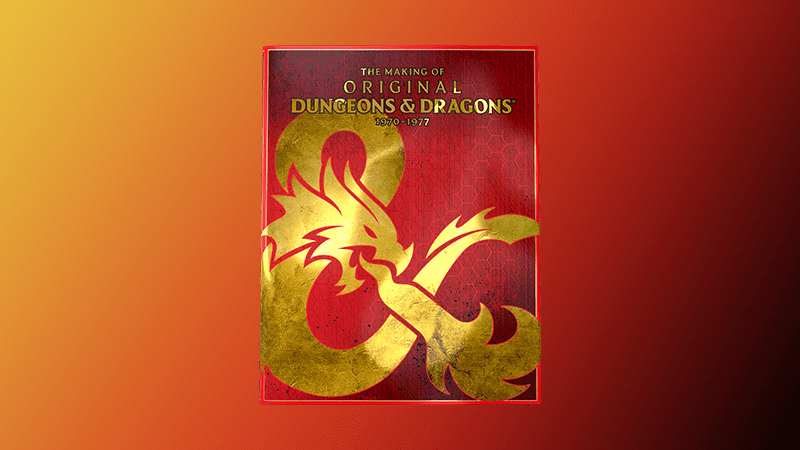So, friends, what would you do if a mysterious traveler (aka the postman) left a confusing and enormously large (576 pages!) book on your doorstep? You would review it! The book will be in stores tomorrow, June 18, 2024.
The book in this case is WotC’s “The Making of Original Dungeons & Dragons: 1970-1977,” with a curation of documents and commentary by John Peterson. The title alone doesn’t really give it away, but it’s mostly reproductions of early documents, from 1969’s “Grayte Wourmes” to excerpts from the first issue of The Dragon in 1976.
The production quality of this book is nothing short of outstanding. It’s hardcover with a very beautiful dust jacket and cover, four bookmark ribbons, and subtle color-coded sections at the bottom of the pages. At $99.95, it’s hard to say it’s for the casual fan. It’s for lifelong fans, scholars of the game’s history, and those looking for a complete retrospective experience to celebrate D&D’s 50th anniversary. I got 3 out of 3 right on this list, how about you?
Now, as I said before, this is a big tome, so I’m not going to go into detail on everything that’s in here. But there are some incredibly deep cuts – things I would never have known while working on the class histories or the Edition Wars podcast. The most enlightening, and new to me, is the deep look into the creative friction between Gygax’s D&D and Arneson’s D&D. There’s a specific quote about Arneson’s frustration with lack of creative control in the final stages of design.
The book is packed with special treats for Greyhawk fans, including early iterations of Greyhawk maps and a history of its early development. Facsimiles of handwritten and typed correspondence between Gygax and Arneson include the first time the name Greyhawk was ever printed. In the same document, Gygax details the level restrictions for dwarves and elves, but as Peterson points out, he had not yet embraced the term “levels,” speaking of three classes (fighter, mage, and cleric), each with multiple classes (what we would now call levels). This meant that Peter Mark Roget had to be the third D&D designer.
Another standout for me is the glimpse the book gives into fandom in the late 60s and early 70s: the magazine “Thangorodrim” supporting the Diplomacy Middle-earth hack, and a few other documents. The post-battle report of the “Battle of Brownhills” submitted to the British publication Wargamer’s Newsletter (which, as Peterson points out, has received a lot of criticism for being based on fantasy rather than history) is interesting given everything that has come since.
This is a wonderful text that gives a look into the early stages of a great creative endeavor. Armor, weapons, hit points, monsters, spells all changed from manuscript to manuscript, and sometimes character sheets and example plays remain, giving further insight into how they worked in play. It is precisely the depth of its detail and insight that makes this book a treasure.
The worst thing I can say about this whole thing is that I wanted more commentary from Peterson. There are significant gaps in the book, and Peterson is interesting. Obviously, this is not a serious critique. This book has just about everything I wanted.
If you’re simply curious, make plans to borrow this book from your local library (libraries are great and should be supported!) For any avid fan, collector, or historian of D&D or TTRPGs in general, this is a must-have book, even if it requires the installation of an extra industrial-grade shelf.

